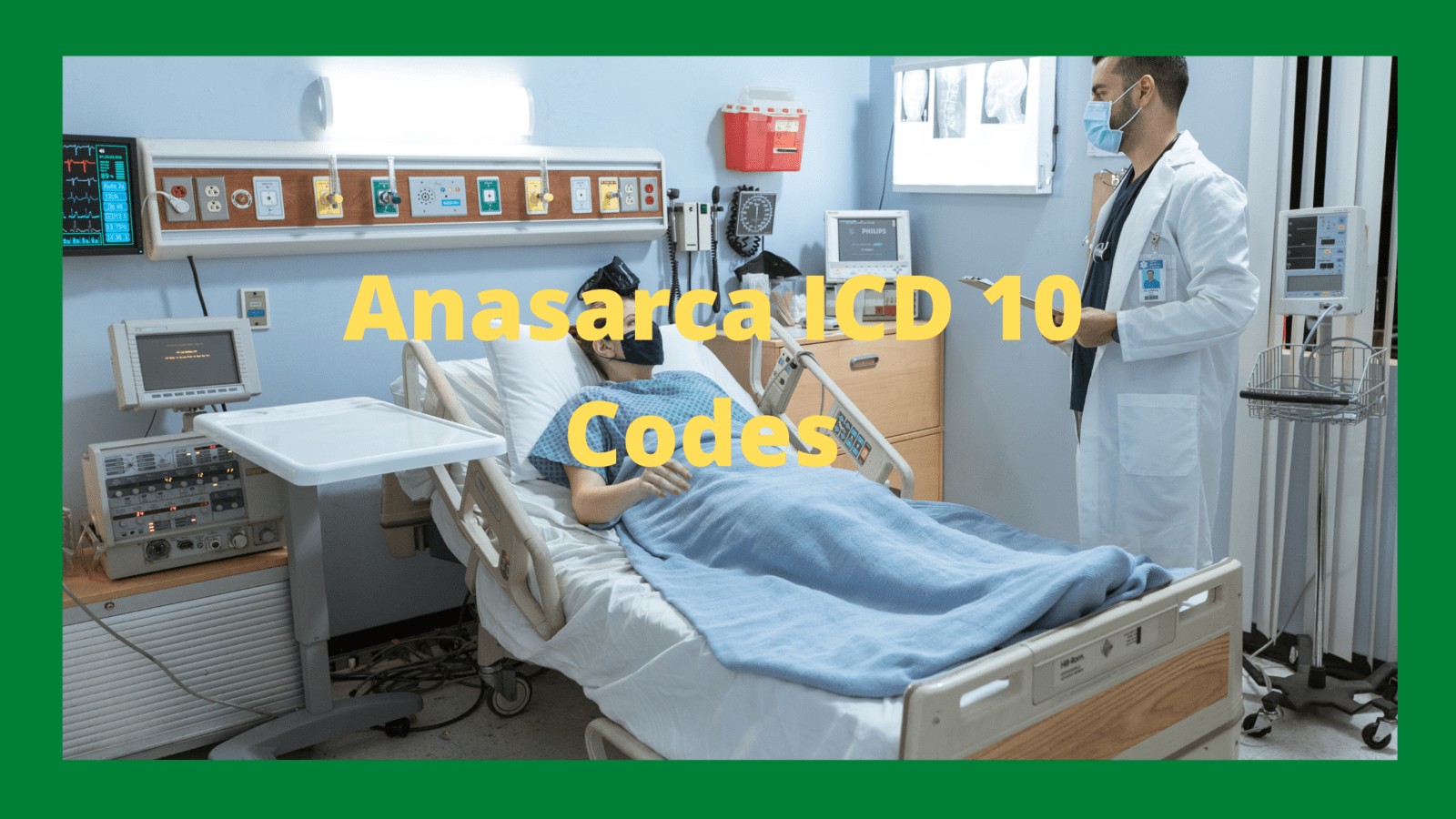Anasarca (Edema) is a medical condition, in this case the whole body suffering with swelling. It occures when body tissues retain too much fluid due to multiple reasons. This condition is also known as extreme generalized edema or massive edema but It differs from types of edema that affect one or two parts of the body. When it happens, it’s usually as a result of a severe underlying condition or organ damage. The ICD 10 Anasarca (edema) and related Anasarca ICD 10 codes will discuss in this article as well.
Table of Contents
- ICD 10 Codes Anasarca:
- Symptoms of Anasarca
- What Are 4 Causes of Anasarca?
- FAQs
- Conclusion:
- Related Articles:
ICD 10 Codes Anasarca:
ICD-10 Anasacra is R60.1, also known as ICD-10 Code for Generalized edema R60.1
Other Related anasarca icd 10 codes also check on ICD10 Codes lookup Tool
| ICD Codes | Description |
| R57.1 | Hypovolemic shock |
| R57.8 | Other shock |
| R57.9 | Unspecified Shock |
| R58 | Hemorrhage, not elsewhere classified |
| R59 | Enlarged lymph nodes |
| R59.0 | Localized enlarged lymph nodes |
| R59.1 | Generalized enlarged lymph nodes |
| R59.9 | Enlarged lymph nodes, unspecified |
| R60 | Edema, not elsewhere classified |
| R60.0 | Localized edema |
| R60.1 | Generalized edema |
| R60.9 | Unspecified Edema |
| R61 | Generalized hyperhidrosis |
| R62 | Lack of expected normal physiological development in childhood and adults |
| R62.0 | Delayed milestone in childhood |
| R62.5 | Other and unspecified lack of expected normal physiological development in childhood |
| R62.50 | Unspecified lack of expected normal physiological development in childhood |
| R62.51 | Failure to thrive (child) |
| R62.52 | Short stature (child) |
| R62.59 | Other lack of expected normal physiological development in childhood |
| R62.7 | Adult failure to thrive |
Before delving into the causes, let’s briefly understand what anasarca entails. Anasarca is the significant and widespread fluid accumulation in the body’s interstitial spaces, resulting in visible swelling throughout various body parts. It is often a symptom of an underlying medical condition rather than a standalone disorder.
Symptoms of Anasarca
Anasarca is characterized by noticeable swelling throughout the body. Here are some common symptoms associated with ICD 10 Anasarca:
- Generalized Edema: Swelling is observed in various parts of the body, such as the face, limbs, abdomen, and even the genital area.
- Weight Gain: Rapid and significant weight gain can be an indicator of fluid retention associated with anasarca.
- Pitting Edema: When pressure is applied to the swollen area, a visible indentation or “pit” remains for some time.
- Shortness of Breath (R06.0): Accumulation of fluid in the lungs can lead to breathing difficulties, causing shortness of breath.
- Fatigue and Weakness: Anasarca can be accompanied by feelings of fatigue and overall weakness due to the strain on the body.
In the extreme cases of anasarca patient will experience too much discomfort. The swelling on face may also impair vision because it makes it hard to open eyes.

What Are 4 Causes of Anasarca?
Here are four primary causes of anasarca:
- Heart Failure: When the Pump Weakens ((I50.9)
Heart failure, a condition in which the heart cannot pump blood efficiently, is a common cause of anasarca. The heart’s compromised function leads to fluid buildup in the body, causing swelling in the lower extremities, abdomen, and other areas. The increased pressure within blood vessels forces fluid into surrounding tissues, resulting in edema.
- Kidney Dysfunction: Impaired Fluid Regulation (N18.9)
Kidney dysfunction, such as chronic kidney disease, can disrupt the body’s fluid balance and contribute to anasarca. The kidneys play a crucial role in filtering waste and excess fluid from the blood. Fluid retention occurs when the kidneys cannot function optimally, leading to widespread swelling. Anasarca can be a sign of advanced kidney disease and may require prompt medical attention.
- Liver Disease: Disrupted Protein Synthesis (K74.6)
Liver diseases, such as cirrhosis or hepatitis, can disrupt the liver’s ability to produce proteins essential for maintaining fluid balance. These proteins, like albumin, help retain fluid within blood vessels. Without adequate protein synthesis, fluid leaks into surrounding tissues, leading to anasarca. Swelling often manifests in the abdomen, ankles, and legs.
- Protein Malnutrition: Insufficient Building Blocks (K90.4)
Inadequate protein intake or malnutrition can contribute to the development of anasarca. Proteins are essential for maintaining the balance of fluid within blood vessels. When protein levels in the body are low, the osmotic pressure decreases, causing fluid to leak into surrounding tissues. This can lead to generalized swelling, including on the face, hands, and feet.
- kidneys no longer function as they have to work, kidney can not remove fluids from the body adequately so it will be the cause of Anasarca.
- Liver disease is also one the cause of Anasarca. Due to liver problem changes in hormones that affect the regulation of fluids in the body.
- Protein deficiency or malnutrition in diet can lead to fluid accumulation in the tissues and cause of Anasarca.
- Protein and fluid leak out of the blood vessels into the body tissues and patient suffers from Anasarca.
- Whole body might retain fluid because of an allergic reaction.
- Multiple medical medications like cancer treatments, can cause of anasarca condition.
Note – The article reference is American Medical Association (AMA), Centers for Medicaid and Medicare Services, AAPC , etc
FAQs
Ans. Diagnosing anasarca involves a thorough medical evaluation, including physical examinations, medical history review, and laboratory tests. These tests may include blood work, kidney and liver function tests, echocardiograms, and imaging studies.
Ans. Anasarca is a symptom of an underlying condition that can range from mild to severe. The severity and potential risks depend on the specific cause. Prompt medical attention is necessary to diagnose and treat the underlying condition causing anasarca.
Ans. Anasarca is typically managed by addressing the underlying cause. Treatment options may include medication to improve heart function, diuretics to reduce fluid retention, dietary changes to manage liver or kidney disease, and addressing malnutrition through nutritional interventions.
Ans. Sometimes, lifestyle changes can help prevent or manage anasarca. These changes may include maintaining a balanced protein-rich diet, limiting sodium intake, exercising regularly, and managing chronic conditions such as diabetes or hypertension.
Ans. The duration of anasarca depends on the underlying cause and its management. With proper treatment and addressing the root cause, swelling can gradually subside. However, if left untreated, anasarca can persist and worsen over time.
Ans. If you experience sudden and severe swelling, particularly in the legs, ankles, or abdomen, it is essential to seek immediate medical attention. Additionally, if you have known underlying conditions such as heart, kidney, or liver disease, and notice an increase in swelling, consult your healthcare provider.
Conclusion:
Anasarca, characterized by generalized swelling, can be a symptom of various underlying medical conditions. Heart failure, kidney dysfunction, liver disease, and protein malnutrition are among the primary causes of anasarca. Prompt diagnosis and treatment of the underlying cause are crucial for managing this condition effectively. If you or someone you know is experiencing anasarca, consult a healthcare professional to determine the underlying cause and appropriate treatment options.
Related Articles:
New ICD-10-CM Covid-19 Codes Apply from 1-JAN-21
ICD 10 codes Renal Failure |Acute kidney failure
Hemorrhoids ICD 10 Code | What is Hemorrhoids Medication


